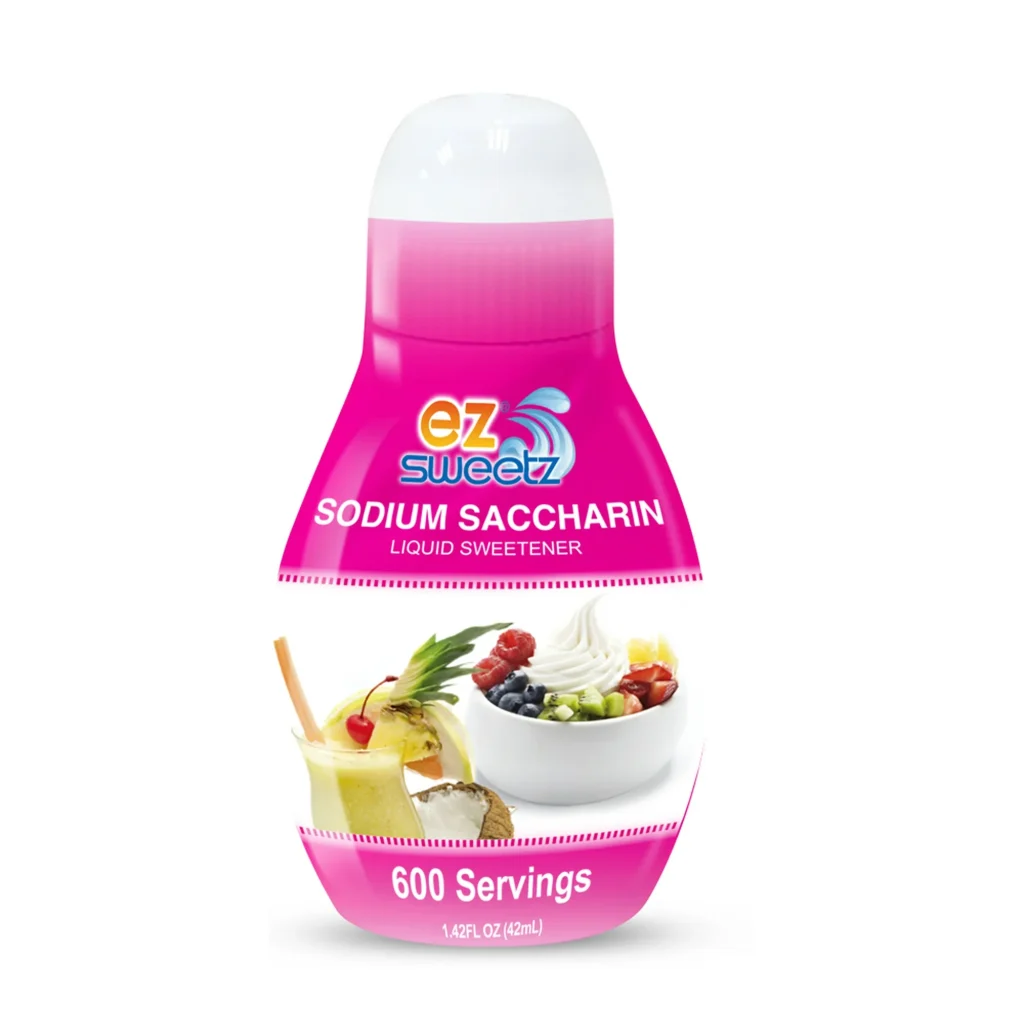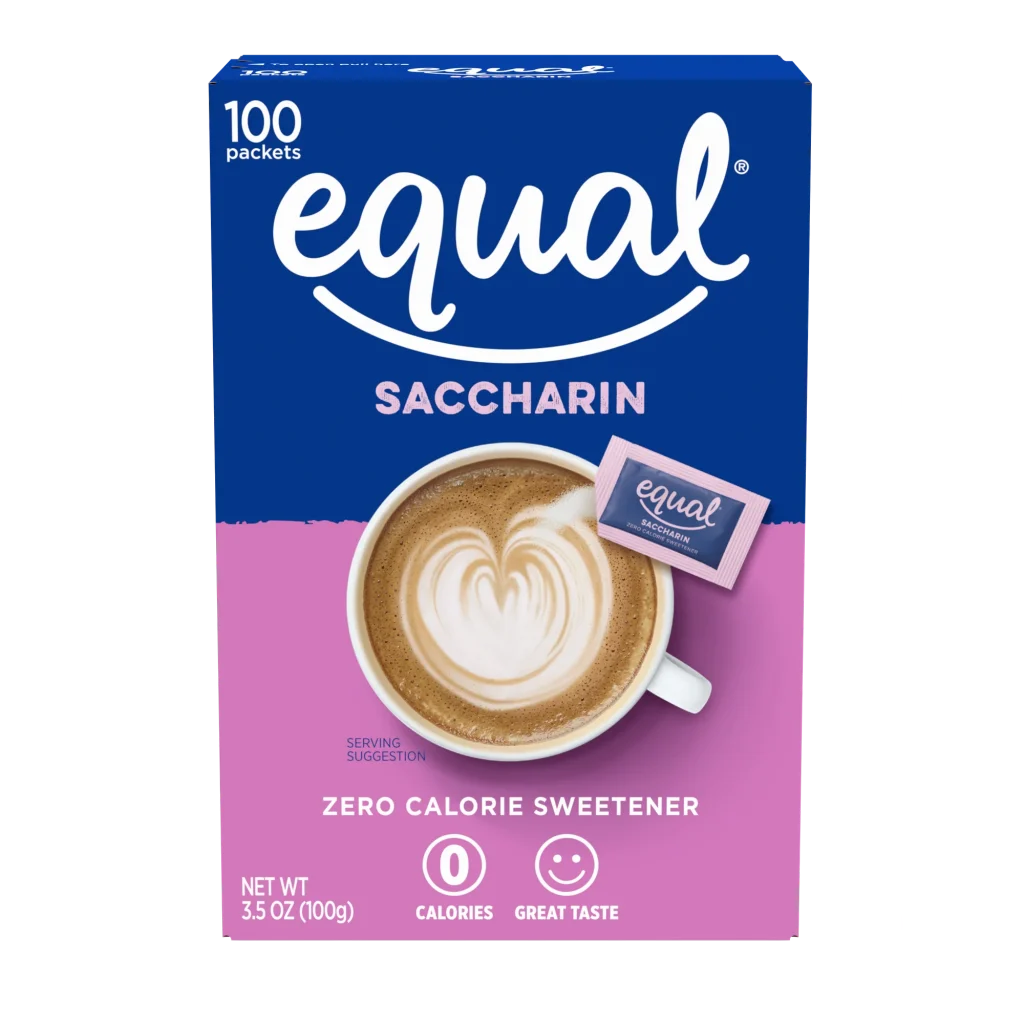What’s Sodium Saccharin(Sodium Saccharine) ?
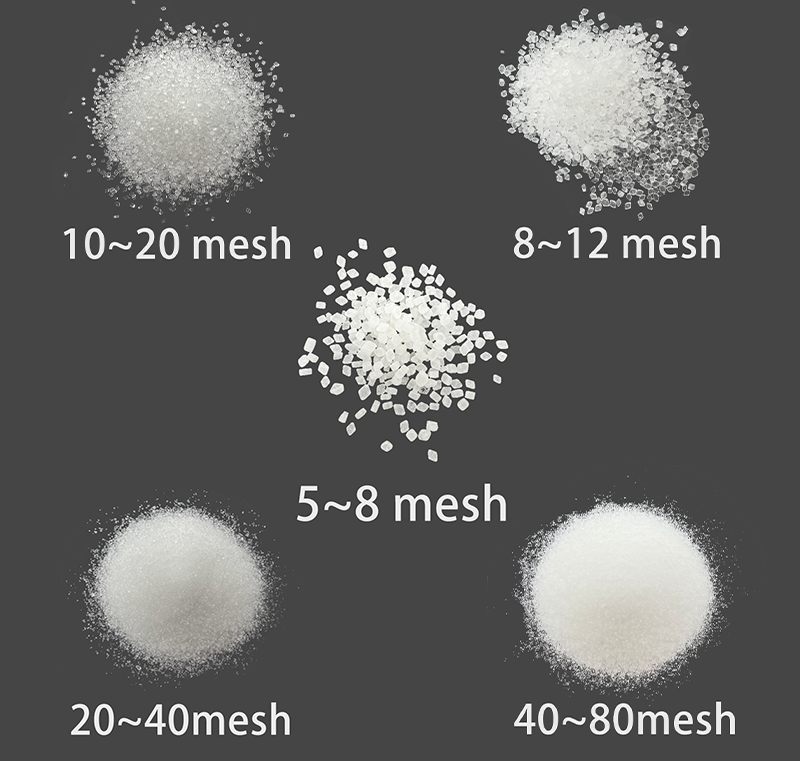
Sodium Saccharin is a non-nutritive or artificial sweetener.
It’s made in a laboratory by oxidizing the chemicals o-toluene sulfonamide or phthalic anhydride. It looks like white, crystalline powder.
Sodium Saccharin is commonly used as a sugar substitute because it doesn’t contain calories or carbs. Humans can’t break down saccharin, so it leaves your body unchanged.
It’s around 300–400 times sweeter than regular sugar, so you only need a small amount to get a sweet taste.
However, it can have an unpleasant, bitter aftertaste. This is why saccharin is often mixed with other low or zero-calorie sweeteners.
For example, saccharin is sometimes combined with aspartame, another low-calorie sweetener commonly found in carbonated diet drinks.
Food manufacturers often use Sodium saccharin because it’s fairly stable and has a long shelf life. It’s safe to consume even after years of storage.
In addition to carbonated diet drinks, saccharin is used to sweeten low-calorie candies, jams, jellies, and cookies. It’s also used in many medicines.
Sodium Saccharin can be used similarly to table sugar to sprinkle onto food, such as cereal or fruit, or used as a sugar substitute in coffee or when baking.
Sodium Saccharin is one of the oldest artificial sweeteners on the market. In fact, it has been used to sweeten foods and drinks for over 100 years.
However, it wasn’t until the ’60s and ’70s that it became popular as a sugar replacement.
Some say that replacing sugar with saccharin benefits weight loss, diabetes, and dental health.
Others are skeptical about the safety of all artificial sweeteners, including this one.
Evidence suggests that it’s safe
Health authorities agree that saccharin is safe for human consumption.
These include the World Health Organization (WHO), the European Food Safety Authority (EFSA), and the Food and Drug Administration (FDA).
However, this wasn’t always the case, as in the 1970s, several studies in rats linked saccharin to the development of bladder cancer.
It was then classified as possibly cancerous to humans. Yet, further research discovered that the cancer development in rats was not relevant to humans.
Observational studies in humans showed no clear link between saccharin consumption and cancer risk.
Due to the lack of solid evidence linking saccharin to cancer development, its classification was changed to “not classifiable as cancerous to humans.”
However, many experts feel observational studies are not sufficient to rule out that there’s no risk and still recommend that people avoid saccharin.
Food sources of Sodium saccharin
Saccharin is found in a wide variety of diet foods and drinks. It’s also used as a table sweetener.
It’s sold under the brand names Sweet ‘N Low, Sweet Twin, and Necta Sweet.
Sodium Saccharin is available in either granule or liquid form, with one serving providing sweetness comparable to two teaspoons of sugar.
Another common source of saccharin is artificially sweetened drinks, but the FDA restricts this amount to no more than 12 mg per fluid ounce.
Due to the ban on saccharin in the 1970s, many diet drink manufacturers switched to aspartame as a sweetener and continue to use it today.
Saccharin is often used in baked goods, jams, jelly, chewing gum, canned fruit, candy, dessert toppings, and salad dressings.
It can also be found in cosmetic products, including toothpaste and mouthwash. Additionally, it’s a common ingredient in medicines, vitamins, and pharmaceuticals.
In the European Union, sodium saccharin that has been added to food or drinks can be identified as E954 on the nutrition label.
Food and drink sources
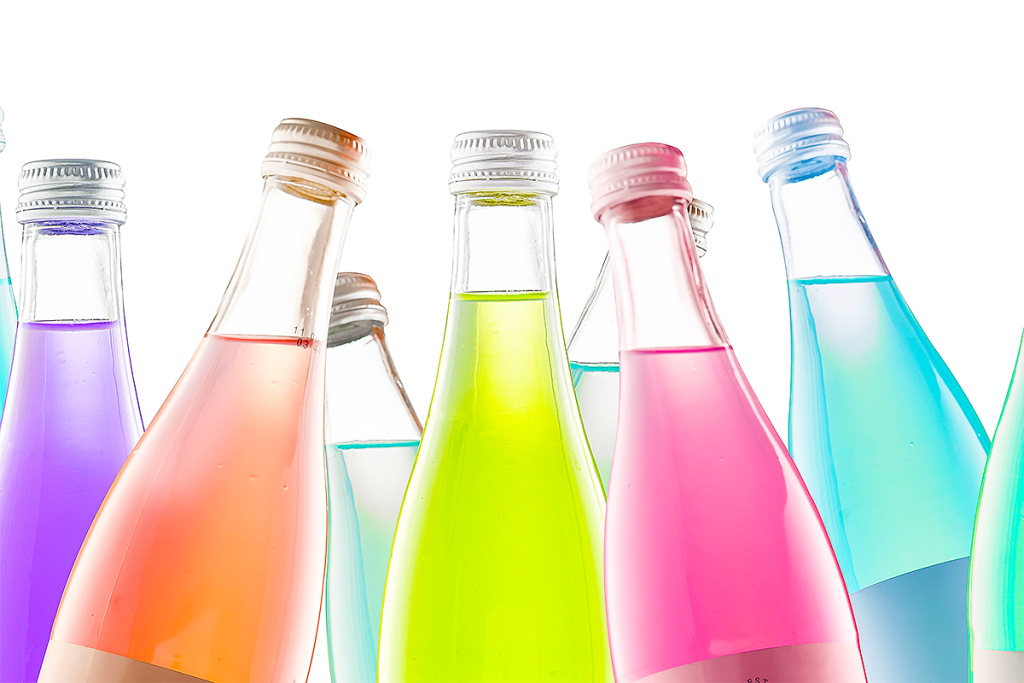
Although it no longer has associations with cancer, the use of saccharin is not as widespread today. The discovery of new sweeteners with no bitter aftertaste may have contributed to saccharin’s decline in popularity.
Food and drink
Saccharin still appears in the ingredients of many foods and drinks, including:
- bakery products
- candy
- chewing gum
- deserts
- jelly
- salad dressings
If manufacturers use saccharin in beverages, the FDA limits the acceptable amount to less than 12 milligrams (mg) per fluid ounce. In processed foods, saccharin cannot exceed 30 mg per serving size.
Sweetener
People can buy saccharin as a liquid or granule table sweetener with the following brand names:
- Sweet and Low
- Sweet Twin
- Sugar Twin
- Sweet’N Low
- Necta Sweet
Uses of Sodium Saccharin
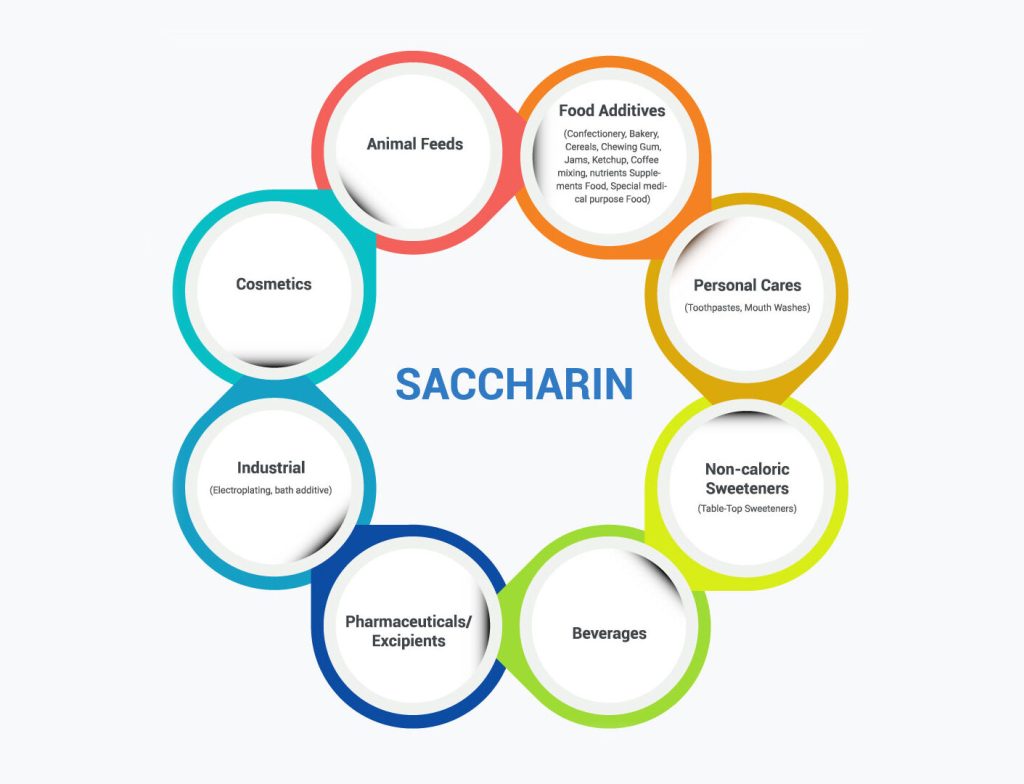
Besides its use in foods and soft drinks, companies also use Sodium saccharin to produce non-food items such as cosmetics, chewing tobacco and snuff, pharmaceuticals, and cattle feed.
How much can you eat?
The FDA has set the acceptable daily intake (ADI) of saccharin at 2.3 mg per pound (5 mg per kg) of body weight.
This means if you weigh 154 pounds (70 kgs), you can consume 350 mg per day.
To further put this into perspective, you could consume 3.7, 12-ounce cans of diet soda daily — nearly 10 servings of saccharin.
No studies have measured the total intake of sodium saccharin in the U.S. population, but studies in European countries have found that it’s well within limits.
Sodium Saccharin may have slight weight loss benefits
Replacing sugar with a low-calorie sweetener may benefit weight loss and protect against obesity.
That’s because it allows you to consume the foods and drinks you enjoy with fewer calories.
Depending on the recipe, saccharin can replace 50–100% of the sugar in certain food products without significantly compromising the taste or texture.
Nevertheless, some studies suggest that consuming artificial sweeteners like saccharin can increase hunger, food intake, and weight gain.
One observational study including 78,694 women found that those using artificial sweeteners gained about 2 pounds (0.9 kgs) more than non-users.
However, a high-quality study that analyzed all the evidence about artificial sweeteners and how they affect food intake and body weight determined that replacing sugar with zero- or low-calorie sweeteners does not cause weight gain.
On the contrary, it leads to reduced calorie intake (94 fewer calories per meal, on average) and reduced weight (about 3 pounds or 1.4 kgs, on average).
Its effects on blood sugar levels are unclear
Saccharin is often recommended as a sugar substitute for people with diabetes.
This is because it’s not metabolized by your body and does not affect blood sugar levels like refined sugar does.
Few studies have analyzed the effects of saccharin alone on blood sugar levels, but several studies have looked at the effects of other artificial sweeteners.
One study including 128 people with type 2 diabetes found that consuming the artificial sweetener sucralose (Splenda) did not affect blood sugar levels.
The same result was observed in studies using other artificial sweeteners, such as aspartame.
What’s more, some short-term studies suggest that replacing sugar with artificial sweeteners may help blood sugar control. However, the effect is usually quite small.
Nevertheless, the majority of evidence suggests that artificial sweeteners do not significantly affect blood sugar levels in healthy people or those with diabetes.
Replacing sugar with saccharin may help reduce the risk of cavities.
Added sugar is a major cause of dental decay.
However, unlike sugar, artificial sweeteners like saccharin are not fermented into acid by the bacteria in your mouth.
Therefore, using a low-calorie sweetener in place of sugar can reduce your risk of cavities.
This is why it’s often used as a sugar alternative in medicines.
However, it’s important to be aware that foods and drinks containing artificial sweeteners can still contain other ingredients that cause cavities.
These include certain acids in carbonated drinks and naturally occurring sugars in fruit juices.
Does it have any negative effects?
Most health authorities consider saccharin to be safe for human consumption.
That said, there is still some skepticism about their potentially negative effects on human health.
A recent study found that using saccharin, sucralose, and aspartame may disrupt the balance of bacteria in the gut.
Research in this area is relatively new and limited. Yet, there is strong evidence to suggest that changes in gut bacteria are associated with an increased risk of diseases like obesity, type 2 diabetes, inflammatory bowel disease, and cancer.
In one 11-week study, mice fed a daily dose of aspartame, sucralose, or saccharin showed unusually high blood sugar levels. This indicates glucose intolerance, and therefore, a higher risk of metabolic disease.
However, once the mice were treated with antibiotics that killed the gut bacteria, their blood glucose levels returned to normal.
Advantage of Artificial Sweetener
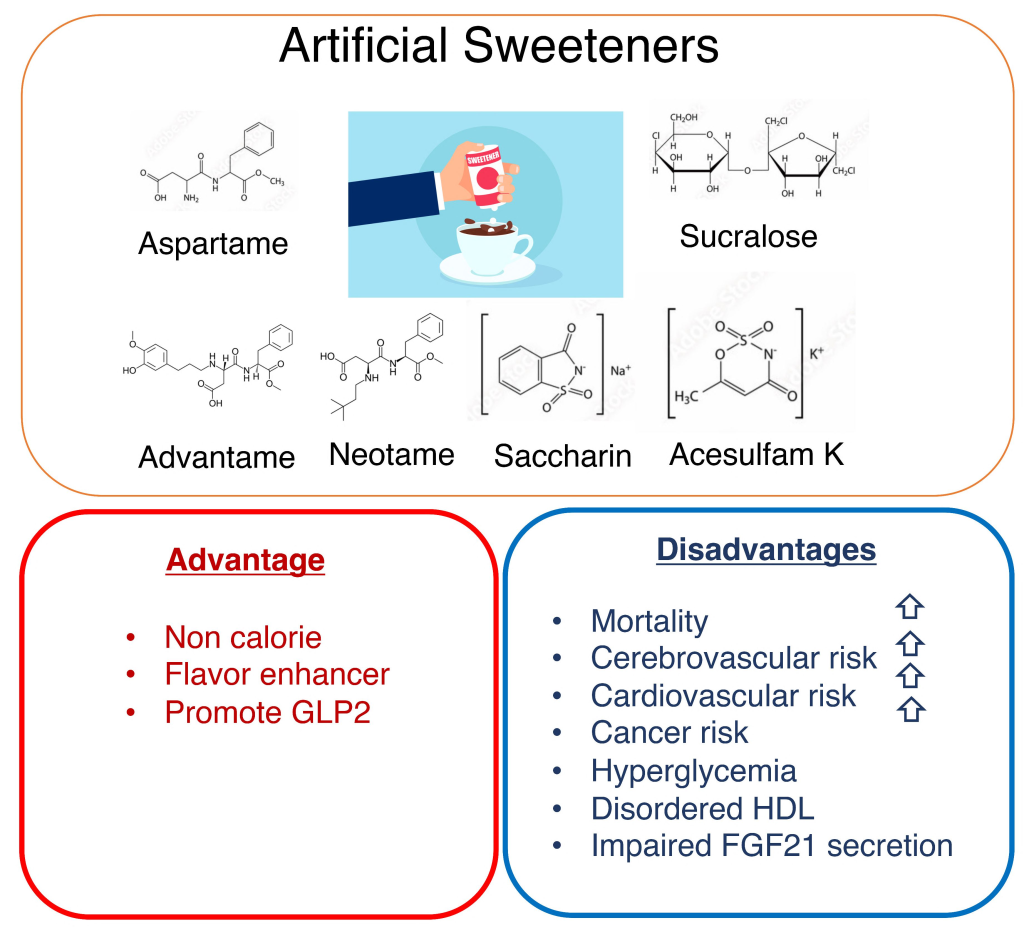
The Global Saccharin Market
The Global Saccharin Market size is expected to be worth around USD 2.8 Billion by 2034, from USD 1.8 Billion in 2024, growing at a CAGR of 4.4% during the forecast period from 2025 to 2034.
Saccharin concentrates, primarily in the form of sodium saccharin, are synthetic sweeteners extensively utilized across various industries due to their high sweetness intensity—approximately 200 to 700 times that of sucrose—and zero-calorie content. Their stability under heat and acidic conditions makes them suitable for applications in food and beverages, pharmaceuticals, personal care products, and industrial processes such as electroplating. In India, the Food Safety and Standards Authority of India (FSSAI) has approved the use of saccharin sodium in food products, permitting its inclusion up to 100 ppm in carbonated water.
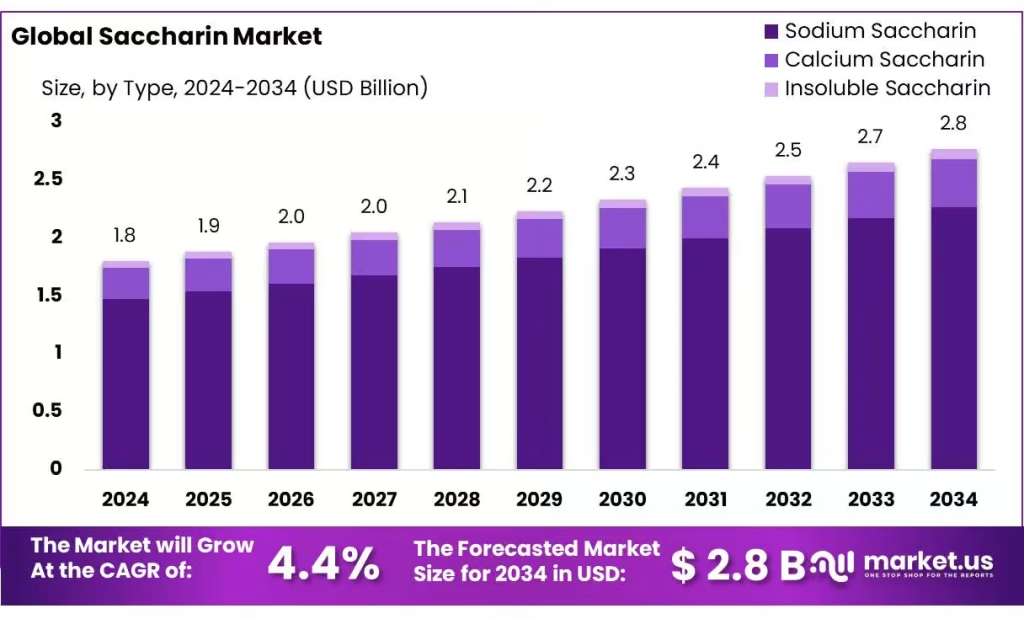
The brand of Sodium Saccharin in the market ?
